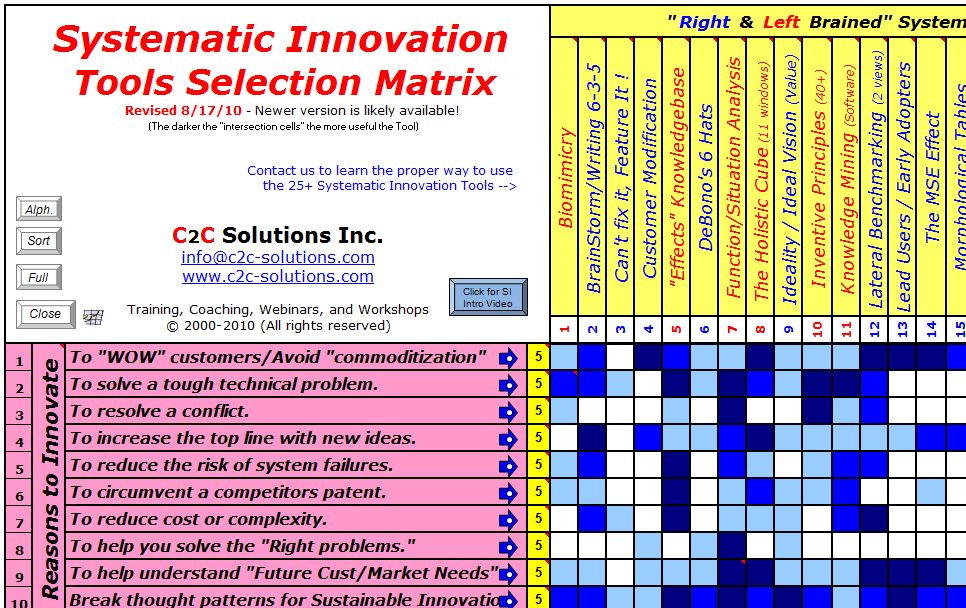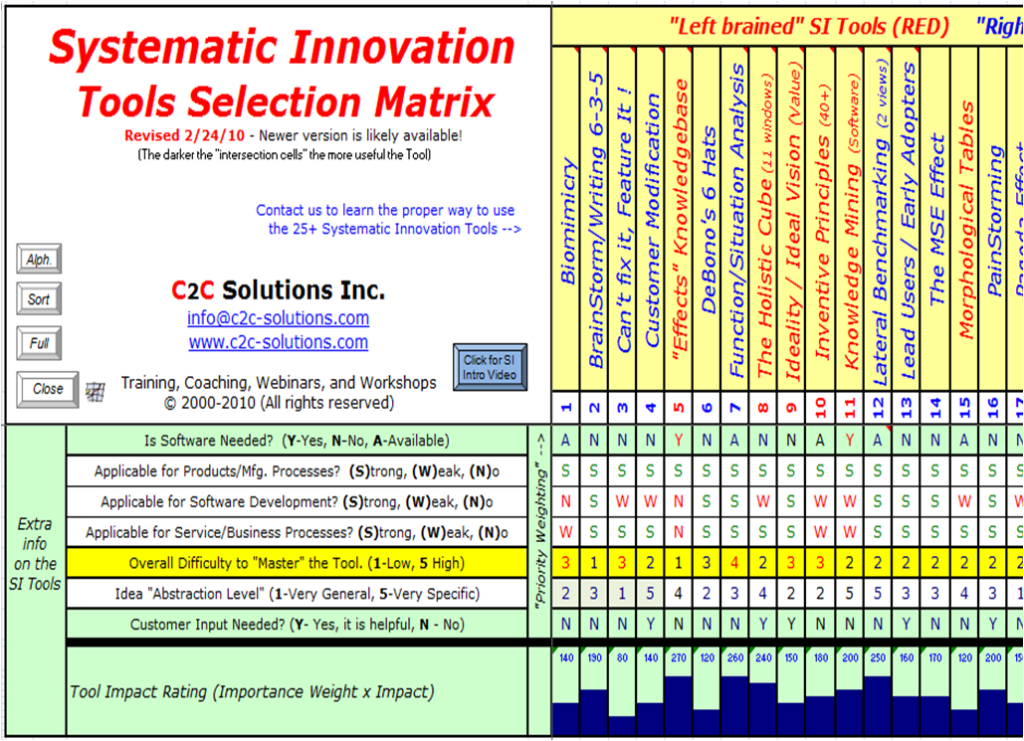Idea Generation – One Size Fits All?
When it comes to idea generation and problem solving there are no “silver bullets”!
When fixing household problems, we don’t always grab a hammer, we try to select the most appropriate tool for the job; a screw driver to remove batteries from a toy, a wrench to tighten your daughter’s kick stand, silicone to repair a small leak, and yes, duct tape and a hammer for almost everything else.
Most people have heard of Maslow’s “if the only tool you have is a hammer, everything looks like a nail.” Just as we should select the right household tool to get the job done well, we must do the same for Innovation and Idea generation tools. For product and service development, there are hundreds of Innovation tools out there, we recommend; each with their own strengths and weaknesses. Knowing this, the trick becomes twofold;
1) Knowing which tool(s) are best for your specific “inventive situation”
2) Learning how to use the tools properly that apply to your situation
For reason #1 above, we have created a “Systematic Innovation Tool Selection Matrix” partially shown in Figure 2 below. It is extremely rare to need or use all the Systematic Innovation tools, but common to use more than one at a time. This Tool Selection Matrix aids a team or individual in determining which Innovation tool(s) are best to use for their “inventive thinking” situations.

Figure 2 – SI Tool Selection Matrix (top portion, partial list)
On the left side of the matrix, we placed several universal “Reasons to Innovate.” Across the top is an extensive set of the “Systematic Innovation Tools” we recommend. We designed the intersections to show the usefulness of each of the Innovation Tools. The intersections simply show how well each of the tools address the 10 “Reasons to Innovate.” The darker the cells, the better the tools are at addressing that particular reason to innovate. The most common way you can use this matrix is to first determine why you need inventive thinking, and then look horizontally across the intersections for the best tools for your particular situation. For example, if you needed to reduce cost or complexity, reason #7, you would use Brainwriting 6-3-5, The Effects Knowledgebase, Knowledge Mining, Lateral Benchmarking, the Trimming Technique, and so on.
Back to our automotive client example: As you remember, they were in desperate need of some new features (USPs) for one of their next generation vehicles to maintain market share in a crowded segment. Looking at the “Reasons to Innovate,” their request best matched reason #1; To “WOW a Customer.” The intersections with the darkest cells were the ones we used with that project team (Brainwriting, Customer Modifications, Effects, The Holistic Cube, Lateral Benchmarking, Lead Users, The MSE Effect, Painstorming, etc). As a result, over 240 ideas were generated and about a dozen finalists went on to a more detailed design phase with concept reviews. Three ended up in the vehicle, including the first vehicle integrated heated or cooled cup holder with no moving parts.

Figure 2b– SI Tool Selection Matrix (bottom portion, partial list)
As shown in Figure 2b above, the SI Tool Selection Matrix also has a section with additional information about each of the Systematic Innovation Tools:
- Is software needed to use the tool? The bad news: Two of the 30+ Innovation Tools on the matrix need third party software. The good news: The rest of the tools do not need software!
- Applicability of each tool This line item clearly shows which tools are applicable for product, services, software, or business processes development. (Not all tools work for all types of projects; remember, no silver bullets!)
- Overall difficulty to master the tool. Just like any handyman tool, some can be learned in minutes (a screw driver) with a high degree of competence while others (a four axis drill press) take much more time and practice to master.
- Abstraction level of suggestions that will come from using the tools. Some tools will give you very specific suggestions; others will give you high level generic directions to ponder.
- Is customer input needed for the tool? Some tools require input from customers; others are completely independent from customer input. Imagine that!
